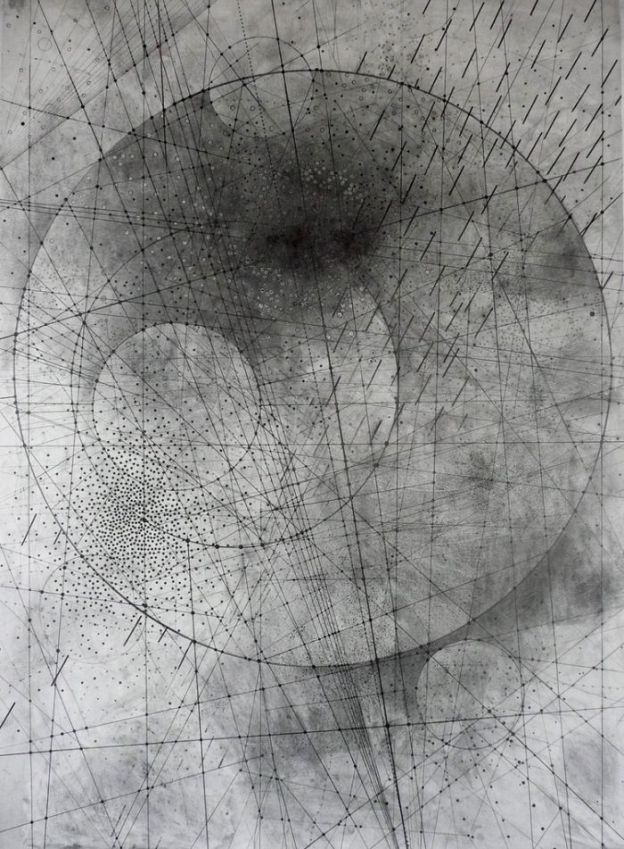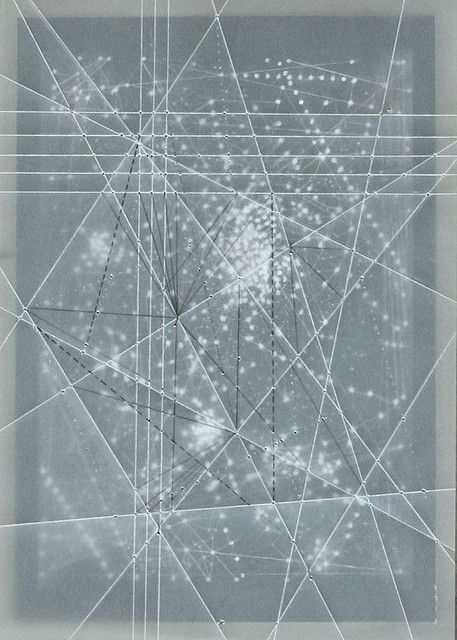Take a chance at changing how you think. This was one of the key thoughts I took away from my mid-point review last month. You can only change what you do on the surface if you never change the way you think underneath. I have been taking the opportunity of the off-site study break to try a new way of working – focussing on doing some sketchbook work to explore my question in depth rather than ‘the answer’.
Following on from the thoughts which surfaced during the wilding the edges walk, I have been mulling over the idea of the anyplace and the no-place: the worlds which we create from our own personal places, our own stories intermixing with the narratives of the people and places we pass by. In considering how to tackle this from the perspective of my practice, I have uncovered the idea of the alternative map, which a range of different artists have looked at from different angles.
First up, Emma McNally who I came across at the Mirrorcity exhibition back in autumn. Emma McNally describes her works as a “Visualisation of complex systems, as a ‘visual thinking’ around questions of emergence.” Her drawings at first look appear to be scientific maps of geological formations and constellations, but they are in fact made intuitively from Emma’s imagination.
Emma describes her practice as “an experimental venture in tune with a world in a perpetual state of flux: there is an ongoing feedback loop between her drawing in carbon on paper and the space of digital manipulation where a different nature of spatial thinking is possible.” Interesting interview can be found here.



Next Grayson Perry, who has also created a number of drawn maps mixing imagined and cartographic process over his career. The one I have picked out is the ‘self-portrait’ Map of Days (2014) which I thought was the highlight of the “Who Are You?” exhibition at the National Portrait Gallery earlier this year.
I spent almost an hour staring at this map which has the last piece in the exhibition’s winding trail around the gallery. It is a visual metaphor of the nature of identity and the self, using the premise of a walled city, dependent on the landscape it sits in, in the same way our identity is shaped and co-created by those around us. It reminds me of one of my favourite books, Hard-boiled Wonderland and the End of the World by Haruki Murakami, which also contains an imagined world within a walled city created as part of the protagonist’s identity as he slowly loses his grip on reality.
“How can the mind be so imperfect?” she says with a smile.
I look at my hands. Bathed in the moonlight, they seem like statues, proportioned to no purpose.
“It may well be imperfect,” I say, “but it leaves traces. And we can follow those traces, like footsteps in the snow.”
“Where do the lead?”
“To oneself,” I answer. “That’s where the mind is. Without the mind, nothing leads anywhere.”
I look up. The winter moon is brilliant, over the Town, above the Wall.
So what does this all mean to my practice? While reserving the right to change my mind, my current thought is to better understand the four tenants to my personal interpretation of place – the anyplace, no-place, the haunted place and the marker point. Materially, I have been working on capturing the ideas of the haunted place through mark-making and stitch – this is coming on well (update soon). However, I think I also need to understand its antitheses in order to more fully understand itself. The map of Grayson Perry to me is one of the anyplace. A location which could be anywhere with any person’s narrative projected into it, yet any of us would understand and relate to it in some way. Conversely, the maps of Emma McNally speak to me of a mapping of the no-place, an image which acts as a Foucaludian mirror; the place without place, at once both empty and occupied. I imagine this link is what had positioned her work so well within the Mirrorcity exhibition – which itself was named after the Foucalt’s ideas on Heterotopia, with the mirror as the example of a real place which stands outside of known space.
